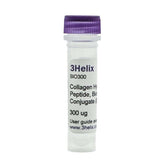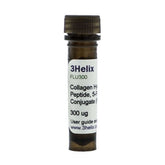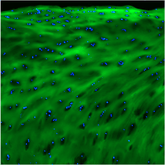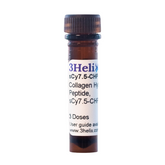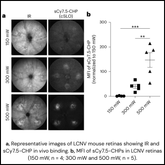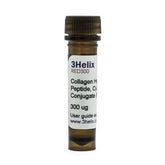Effective enzymatic debridement of burn wounds depends on the denaturation status of collagen
Another great paper using CHPs! A recent article published in Wound Repair and Regeneration evaluated how the level of collagen denaturation within burned tissues influences the effectiveness of enzymatic debridement (removal of damaged tissue). They showed that low-temperature burns (<65 °C) had inadequate debridement, while high-temperature burns (>65 °C) had very effective debridement. By using CHPs, Sirius red (PSR), and second harmonic generation microscopy, they concluded that when the collagen is completely denatured, the enzymatic debridement worked better. CHP staining directly showed where the damaged collagen was, while PSR and SHG showed signal for intact collagen and the lack of signal indicated damaged collagen.
Abstract
The treatment of burn wounds by enzymatic debridement using bromelain has shown promising results in our burn center. However, inadequate debridement occurred in a few cases in which the etiology of the burn was attributed to relatively low-temperature burns. We hypothesized that bromelain is ineffective in burns in which collagen denaturation, which occurs approximately at 65 °C, has not taken place. Our objective was to assess whether there is a relationship between the denaturation of collagen and the ability of bromelain to debride acute scald burn wounds of different temperatures. Ex vivo human skin from four different donors was cut into 1x1 cm samples, and scald burns were produced by immersion in water at temperatures of 40 °C, 50 °C, 60 °C, 70 °C, and 100 °C for 20 minutes. Denaturation of collagen was assessed with histology, using hematoxylin and eosin (H&E) staining and a fluorescently labeled collagen hybridizing peptide (CHP), and with second harmonic generation (SHG) microscopy. Burned samples and one control sample (room temperature) were weighed before and after application of enzymatic debridement to assess the efficacy of enzymatic debridement. After enzymatic debridement, a weight reduction of 80% was seen in the samples heated to 70 °C and 100 °C, whereas the other samples showed a reduction of 20%. Unfolding of collagen, loss of basketweave arrangement and necrosis was seen in samples heated to 60 °C or higher. Evident CHP fluorescence, indicative of collagen denaturation, was seen in samples of 60 °C, 70 °C, and 100 °C. SHG intensity, signifying intact collagen, was significantly lower in the 70 °C and 100 °C group (P <.05) compared to the lower temperatures. In conclusion, denaturation of collagen in skin samples occurred between 60 °C and 70 °C and strongly correlated with the efficacy of enzymatic debridement. Therefore, enzymatic debridement with the use of bromelain is ineffective in scald burns lower than 60 °C.
CHECK OUT THE FULL ARTICLE HERE
